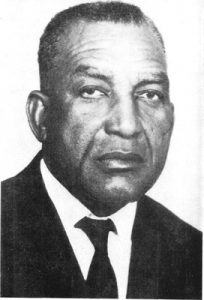Henry Clifton Fairweather 1906 – 2002

Henry Fairweather spent his early life in the employment of the government of British Honduras, today’s Belize, as a land surveyor. As such in 1933 he was a member of the survey team that defined the Belize-Guatemala border. An interesting and informative document that came out of that survey was written by Fairweather entitled “The British Honduras Guatemala Boundary.” In the book Fairweather mentions the Maya leader, Marcus Canul, who played an important role in the establishing of the border between Guatemala and British Honduras.
In the annals of the history of Belize, Henry Fairweather played many important roles. In the 1920s he is mentioned as supporting Monrad Metzgen’s idea of the first Cross Country Cycling Classic. He was instrumental in being involved with building sites after two major hurricanes. As Head of the Housing and Planning Department, he designed a new town for Corozal after it was destroyed by hurricane Janet in 1955. Then, after hurricane Hattie in 1961, when the Government appointed a committee to recommend a suitable site for a new capital city, it was Fairweather who was appointed to chair the committee. When in 1966 the Government assembled a National Parks Commission to identify areas in Belize to be national parks, Fairweather was named as a member.
Henry Fairweather gave up separating countries and planning cities in 1982, and started planting mahogany trees. At his death in 2002 it is estimated that he had planted over one hundred thousand trees, which actually surpassed his dream of planting a thousand trees for each year of his life. Living in the jungles along the Sibun River he took on that incredible task, and at age 93 he stated: “I have no textbook to follow on this. It’s just my long knowledge of the forest and my desire to do something for the country.”
Up to the year 2000 only Fairweather’s friends and neighbors knew what he was actually up to. By his estimation, he had spent more than half a million dollars planting some eighty-five thousand trees on his four hundred acres of Belize. He said he planted mahogany trees because he believed that “one day the plantation will be a money making machine,” which was an idea he wanted to plant in the minds of other Belizeans. His plan was to plant enough mahogany trees for them to sell and be sustainable for people to live by.
By his own admission Fairweather said that planting mahogany trees was strictly hard work with a lot of sacrifices and a lot of punishment. There were numerous setbacks like forest fires and floods that wiped out parts of the plantation, but with his tenacity not even nature’s wrath could stifle his resolve.
In 1988 Fairweather joined forces with a community based project called the Belize River Valley Development Program (BELRIV), to continue planting Belize’s mahogany as well as to plant his knowledge into poor communities in the Belize River Valley. He was convinced that with an enabling environment, extensive cultivation of mahogany would lay the base for the economic transformation of Belize in the 21st Century.
In as much as the “Mahogany Man” as the indefatigable Henry Fairweather was called, and committed as he was to the planting of mahogany trees, it was pretty obvious that he himself would not see the fruits of his labor. Of course that did not stop him from putting trees in the ground, and his words to that effect are very telling: “I want to continue to plant as long as I can continue. I want to leave a legacy behind. I want to be able to, when I get to St. Peter, give account of my stewardship.”
Henry Fairweather will be remembered as more than a celebrity who lived to the advanced age of 96. Belizeans will revere him as a true patriot who left a great legacy and heritage for his country in his civil and community endeavors.

